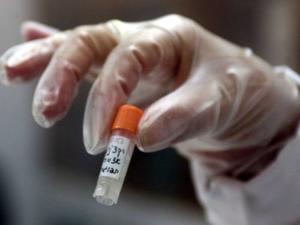SmallpoxSmallpox vials found unguarded at NIH campus in Bethesda, Md.
Earlier this month workers clearing out a Food and Drug Administration(FDA) branch office at the National Institutes of Health(NIH) campus in Bethesda, Maryland, discovered vials containing smallpox, an eradicated agent feared for its bioweapons potential. The last smallpox samples in existence were thought to be held at tightly guarded facilities in Atlanta and the State Research Center of Virology and Biotechnologyin Novosibirsk, Russia. The vials appear to date from the 1950s.

Greatest concern is vials like this in the hands of terrorists // Source: shellsec.com
Earlier this month workers clearing out a Food and Drug Administration (FDA) branch office at the National Institutes of Health (NIH) campus in Bethesda, Maryland, discovered vials containing smallpox, an eradicated agent feared for its bioweapons potential. The last smallpox samples in existence were thought to be held at tightly guarded facilities in Atlanta and the State Research Center of Virology and Biotechnology in Novosibirsk, Russia. The Homeland Security News Wire reported earlier this year that the World Health Organization (WHO) is debating whether those samples should be destroyed.
“The vials appear to date from the 1950s,” according to a statement by officials at the Centers for Disease Control and Prevention (CDC). “Upon discovery, the vials were immediately secured in a CDC-registered select agent containment laboratory in Bethesda.”
“There is no evidence that any of the vials … has been breached, and on-site biosafety personnel have not identified any infectious exposure risk to lab workers or the public,” a press release states. “Late on July 7, the vials were transported safely and securely with the assistance of federal and local law enforcement agencies to CDC’s high-containment facility in Atlanta.”
Global Security Newswire reports that further tests, which could take up to two weeks, will determine whether the smallpox discovered could still have caused infection. According to the CDC, the agency “has notified (WHO) about the discovery, and WHO has been invited to participate in the investigation. If viable smallpox is present, WHO will be invited to witness the destruction of these smallpox materials, as has been the precedent for other cases where smallpox samples have been found outside of the two official repositories.”
The FBI, along with the CDC’s Division of Select Agents and Toxins, is investigating why the samples were stored in the FDA branch office. “We’re trying to find out,” said CDC spokesman Tom Skinner. “This certainly is an unusual event.”
